
views
X
Research source
The difference between your breasts may be subtle or more noticeable. During breastfeeding this may be due to a number of reasons, such as one breast not producing as much milk as the other, but is is usually nothing to worry about. Another cause could be one breast produces normally while the other overproduces, leading to engorgement or even a plugged duct. If you want to try and balance your breasts, there are a number of things you can do, but keep in mind you don't need to take action if it doesn't bother you or your baby.
- Nurse on the smaller breast first. Your baby’s suckling will encourage your breast to produce more milk, helping to even your breast size.
- Pump for 10 minutes on the smaller breast after your baby eats. Like nursing, this will stimulate your breast to increase its milk supply and help to level your chest.
- Many women produce different amounts of milk in each breast, making lopsided breasts a fairly normal occurrence throughout breastfeeding.
Balancing Breasts for Feeding

Nurse on the smaller breast first. Your baby's suckling is what triggers your body to produce milk. Also, babies tend to suckle harder when they first start feeding; therefore, if your baby suckles on the smaller breast first when you feed them, it can help trigger milk flow in that breast, helping to balance out the size of your breasts. This solution only works if one breast is producing normally while the other is under producing. If one is overproducing, you may need to drain the milk off to prevent engorgement. Hand-express the overproducing breast for no more than 20 to 30 seconds. Another option is to nurse more often on the smaller side than the larger side.

Pump more on the smaller side. Once your baby eats, try pumping for 10 minutes or so afterwards. In addition, you can try pumping just this side between the times you feed your baby.
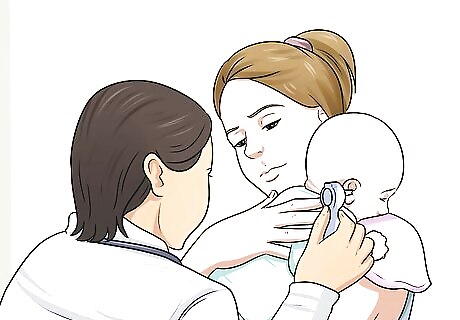
Take your baby to the doctor. Sometimes, a preference for one side or the other means your baby doesn't feel right in a certain position. That discomfort could indicate an illness for your baby, such as an ear infection, or a treatable condition called torticollis. If you notice your baby always fusses unless they are on one side, take them to the doctor to have them checked out.

Understand that it's medically fine. That is, your breasts being different sizes doesn't indicate anything is wrong health-wise, unless other symptoms are present. In fact, many women produce different amounts of milk in each breast, leading to different sizes. You can even only feed on one breast if you need to do so, and your other breast will slowly regain the size it was before you got pregnant.
Treating Engorgement

Watch for symptoms. Your breasts will become larger after you give birth; however, sometimes you may develop engorgement, where your breasts become hard and swollen because milk is getting blocked up inside. Symptoms can include your breast being tender and warm or a throbbing sensation. You might also notice your nipple flattening out or that you are running a light fever (under 100.4°F or 38°C). If not treated, you can develop a plugged duct, which will cause your breasts to be uneven, as well as being a problem medically.
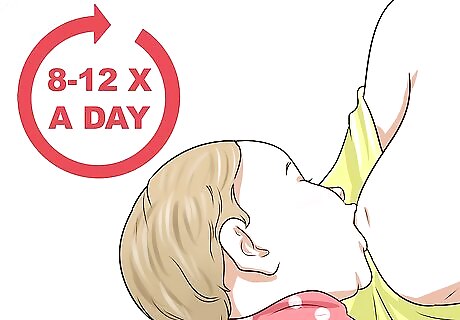
Feed often. One way to help treat engorgement is to feed often. That means letting your baby eat when they want and as long as they want, often eight to 12 times a day. That also means feeding at least every four hours; even if your baby is asleep, you should wake them up to feed.
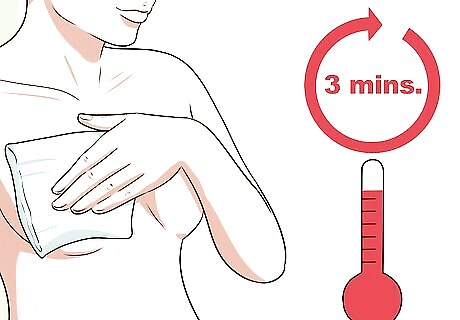
Prepare before breastfeeding. To make breastfeeding easier, try using a warm compress before you feed. Apply light heat for three minutes. Another option is gently massaging your breast so that it releases milk. You can also gently massage your breast while your baby is suckling.
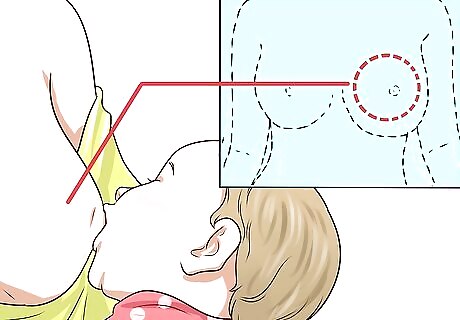
Breastfeed on the larger breast if it is engorged. Once your breast becomes engorged, you should try to use that breast more often. When one breast is underperforming and the other one is normal, it's fine to use the smaller one more often to stimulate milk; however, when one is engorged, you need to focus more on it to help release some of the build of up milk, which is causing the problem. It's common for just one breast to become engorged, rather than both at the same time.
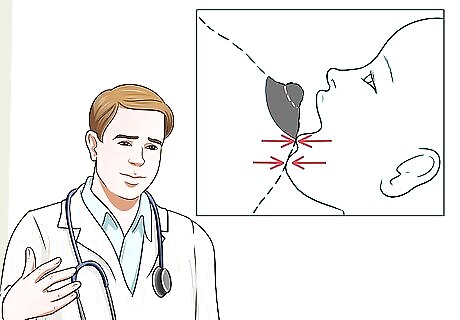
Focus on latching. If your baby isn't latching on well, you may need to work with a specialist (such as a lactation consultant or your doctor) to help with latching. If the baby is not latching, they may not be getting enough milk. One way to help your baby latch properly is to bring their head up underneath your breast, letting their chin be closest to your breast. Try to get them to touch your breast with their bottom lip on the far bottom side of your areola. That way, they can pull in enough of your breast, situating your nipple towards the back of their mouth.
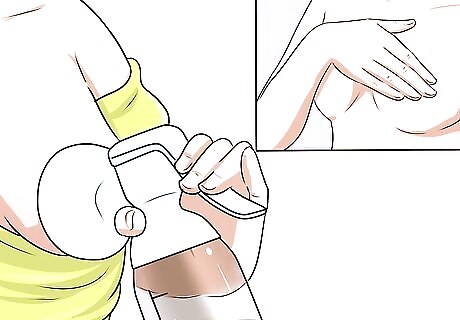
Pump only when needed. That is, if you're feeding your baby regularly (every couple of hours), you don't need to pump unless your breast becomes hard, and your baby is not ready to eat. If you pump too much, you'll encourage your body to produce more milk, which can lead to engorgement for long periods of time. Also, keep your pumping sessions to about two to three minutes on low. If you've returned to work and need to pump, try to do it when you would normally feed your baby to keep on the same schedule; make sure you are pumping at least in four-hour increments.
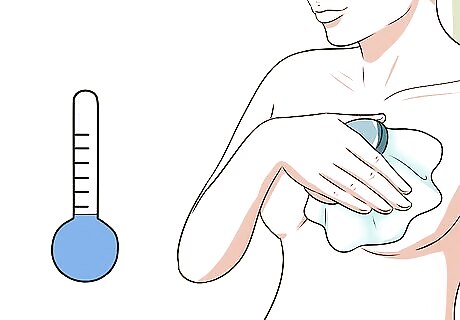
Use cold to help with the tenderness. When you're not feeding, you can apply cold to your breasts to help ease the pain. Use an ice pack covered in a cloth. You can use it directly before or after feeding.
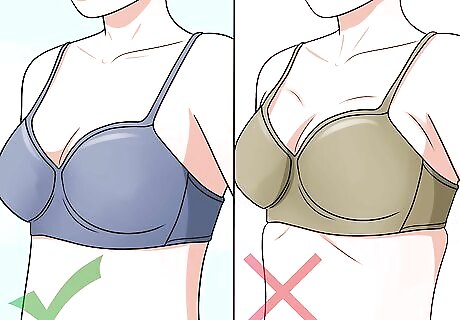
Pick a good bra. If your bra fits well, it can help with engorgement. Make sure it is not too tight. In addition, make sure it supports your breasts, but skip ones with underwire. If a bra is too tight, it can contribute to engorgement by cutting off the flow.
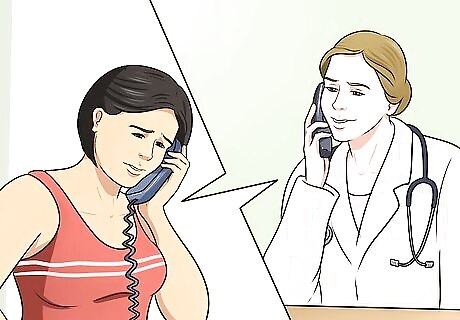
Know when to call the doctor. If you notice that your breasts have become hard, especially if they are painful, it's time to talk to your doctor. You should also give them a call if your child seems to be having trouble with breastfeeding. Finally, if you are running a fever over 100.4°F (38 °C) or notice the skin of your breast has become red, you may want to call. You will notice some hardness in the first few days of breastfeeding, which is normal, but if you suddenly develop hardness with pain in your breasts, it's time to call the doctor.
Treating Plugged Ducts
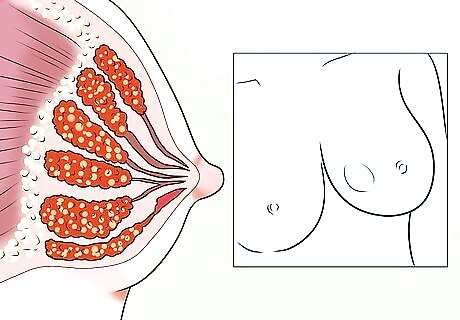
Watch for symptoms. When an engorged breast becomes completely blocked, it's called a plugged or clogged duct. Essentially, the milk duct becomes clogged, not allowing as much milk to come through. You will notice a lump in your breast that is painful; usually, this condition isn't accompanied by a fever. Most of the time, your breast will be partially blocked, not fully blocked; however, sometimes, you may have skin cells grow over the end of your nipple, which you'll be able to see as a small white dot.
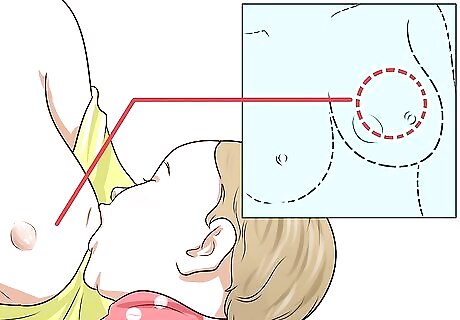
Feed on the plugged side. Just as with engorged breasts, it is important to focus more on this side while the breast is plugged. Doing so can help release the clog. Even if your breast is truly blocked, your baby feeding can help. If they don't pull off the small bit of skin cells, you can use a washcloth or even your fingernail to gently remove it.
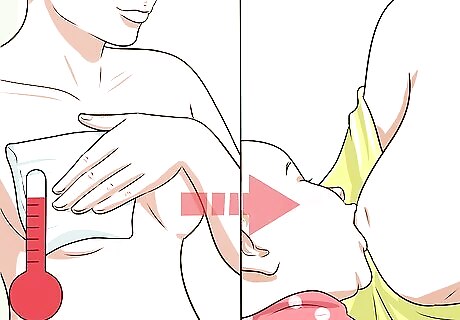
Apply a warm compress. Use a warm compress to help relieve the pain. It can also help release the clog. Doing so right before you feed can make your milk come faster.

Massage your breasts. Massaging can also help plugged ducts. Begin with where you find a sore spot, rubbing in the direction of your nipple. This motion can help ease pain as well as help your milk to flow.
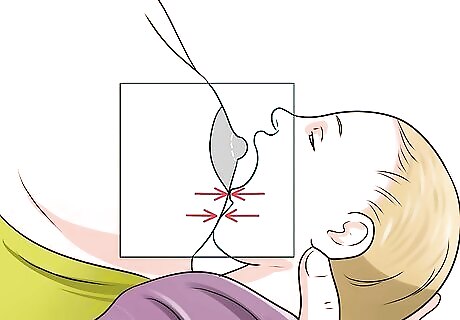
Help your baby latch. Latching is important in getting milk to flow well; therefore, if your baby isn't latching properly, your milk may not be flowing fast enough. In addition, your baby may not be eating enough.
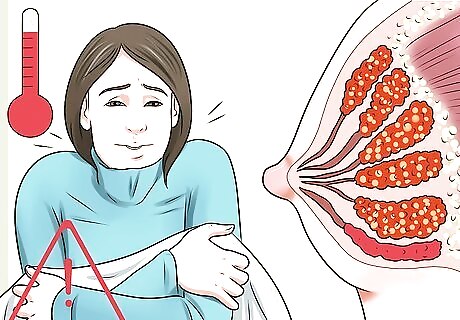
Watch for mastitis. If you develop a fever (101°F 38.3°C or higher) or chills, you likely have mastitis instead of just a plugged duct. You may also just feel bad all over, in addition to the symptoms you feel because of the plugged duct. You might also notice your skin turn red on your breast (sometimes in a wedge shape) or a burning sensation, especially while feeding. If you notice these symptoms, definitely call your doctor. Mastitis is essentially an infection in your breast that sometimes develops after a plugged duct.
Hiding Unevenness
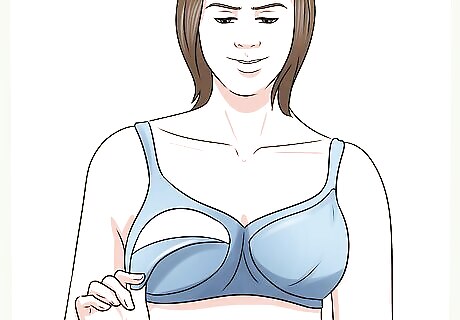
Try a padded breastfeeding bra. Most nursing bras have some extra padding to absorb any extra flow. Nonetheless, make sure you pick one that is molded or that has padding. If it has both, even better. Padding and molding will help hide the unevenness of your breasts.
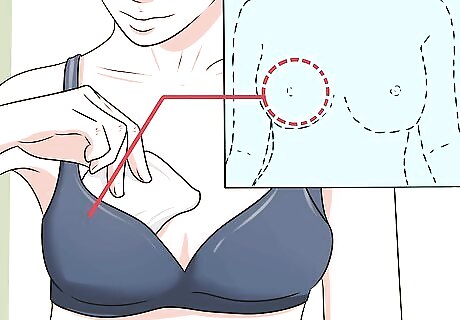
Use a pad on the smaller side. You can either buy bra pads or pick a bra that has removable pads. Don't use one on the larger side, but insert it on the smaller side. The pad will make your breasts look more even.

Fit your bra to the larger breast. If you need to buy a new bra due to unevenness, pick one that fits the larger breast. You don't want to restrain the larger breast by purchasing a bra that is too small.


















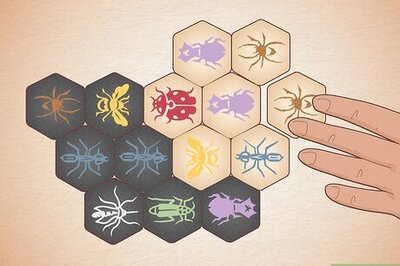
Comments
0 comment